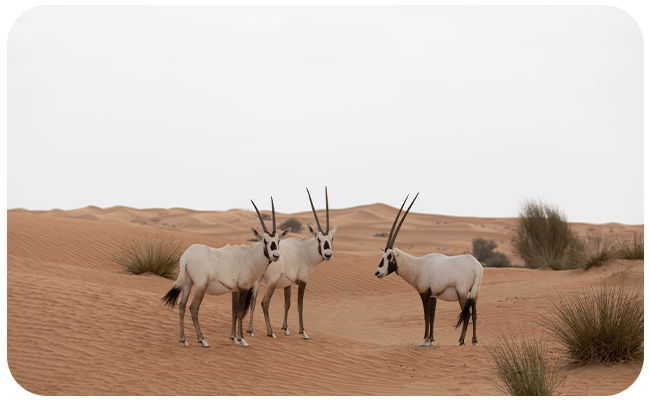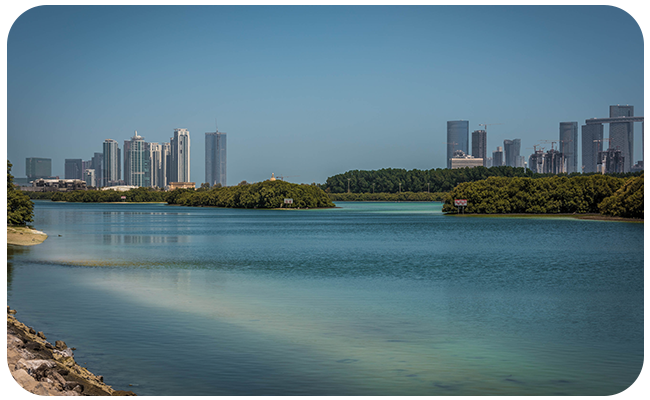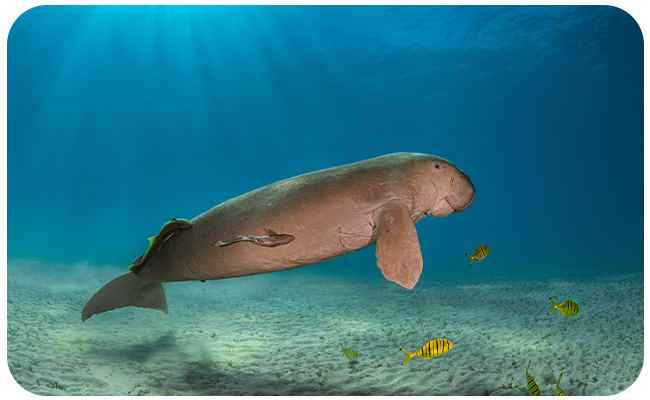At the heart of these efforts is a commitment to protecting species, restoring ecosystems, and embedding sustainability into every facet of national development. The UAE’s conservation journey is rooted in the legacy of the late Sheikh Zayed bin Sultan Al Nahyan, founder of the UAE, whose pioneering environmental vision continues to guide the country’s approach to safeguarding its natural heritage.
Today, that legacy is being realised through a national network of 49 protected areas across land and sea, covering deserts, mountains, mangroves, and coral reefs, collectively amounting to 18% of the UAE’s terrestrial and 12% of its marine areas. These habitats provide critical sanctuaries for some of the most iconic and threatened species such as the Arabian oryx, dugong, hawksbill turtle, and houbara bustard—some of which have been successfully reintroduced.
These achievements reflect the impact of national conservation strategies and long-term environmental stewardship.

Among the UAE’s most celebrated nature-based interventions is its commitment to science-based mangrove restoration. These vital natural infrastructures are more than ecological assets, storing up to ten times more carbon than tropical rainforests per hectare. Mangrove cover increased in the emirate of Abu Dhabi by 92% between 1987–2022, contributing to a nationwide increase of 150% in the last 37 years. We have also been closely monitoring our mangroves through regular field surveys and remote sensing, with recent analyses indicating that 80% of surveyed mangrove habitats in Abu Dhabi are considered healthy. Together with our partners under the Abu Dhabi Mangrove Initiative, we have rapidly scaled up restoration across 3600 hectares, leveraging innovative technologies such as AI-guided drones.

The UAE’s commitment to biodiversity conservation extends well beyond its borders. The restoration of large antelopes in Chad, for example, is one of the most ambitious large mammal reintroduction programmes in the world. The return of the scimitar-horned oryx — once extinct in the wild— is an inspiring conservation success story. Since the programme’s inception in 2016, the scimitar-horned oryx population in the wild in Chad has steadily increased to 650 individuals, leading to the species’ reclassification by IUCN as Endangered. The programme, which has run for over a decade is an excellent example of how visionary leadership, long-term commitment and global partnerships can restore species and rejuvenate ecosystems.
These achievements are powered by cross-sector collaboration. Federal and local environmental agencies including the Environment Agency – Abu Dhabi play a prominent role in leading conservation efforts. The UAE has a long-standing partnership with IUCN and its Species Survival Commission. Through this collaboration, the UAE has produced the UAE and Abu Dhabi Red List of Species, the Abu Dhabi Red List of Ecosystems, and identified 9 Key Biodiversity Areas (KBAs) across the country. Since 2009, the UAE has also hosted and supported the only office of the Convention on Migratory Species (CMS) outside Bonn, supporting the implementation for MoUs on migratory birds of prey and dugongs. The UAE dugong population, estimated at around 3,500 individuals, primarily in Abu Dhabi waters, is the second-largest population globally after Australia. These efforts significantly contribute to global databases, supporting species protection at both local and global levels and enhancing ecosystem resilience and climate adaptation.

As the UAE prepares to host the IUCN Congress later this year in Abu Dhabi, the country is reinforcing its role as a bridge between local action and global impact. From deploying AI and satellite technologies to monitor species and restore ecosystems, to empowering the community to lead conservation efforts, the UAE is making conservation part of the national conversation—and a key pillar of its sustainable development strategy.
Importantly, the UAE sees nature as a key ally in achieving its climate goals. The country’s Net Zero by 2050 strategy, and its leadership in hosting COP28, further underscore a commitment to scaling up nature-positive solutions, regionally and globally. Our pioneering efforts in protecting and restoring blue carbon ecosystems—including protecting 2,956 square kilometres of seagrass meadows and nearly 183 square kilometres of mangroves—are vital carbon sinks that complement broader mitigation and adaptation measures.
The UAE’s message is clear: protecting and restoring nature is not just an obligation but a strategic national imperative. As we face interconnected crises, nature must be at the centre of our collective response. Through innovation, partnership, and purpose, the UAE is showing how countries can lead with nature—building resilience for people, planet, and future generations.